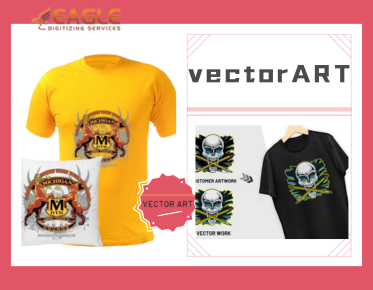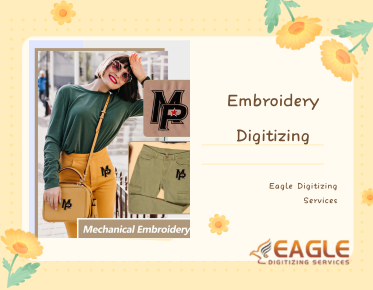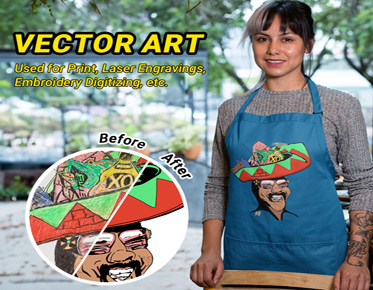Green and Gorgeous: Uncommon Sustainable Products from Vector Art
In an era where environmental consciousness and creativity converge, vector art emerges as a powerful tool for promoting sustainability. With its precision and versatility, vector art enables designers to craft eco-friendly products that not only captivate but also contribute to a greener planet. Let’s explore how this digital medium can transform various sectors into beacons of sustainability.
The Role of Vector Art in Promoting Sustainability
Why Vector Art is the Green Choice for Designers
Vector art stands out in the realm of sustainable design due to its digital nature and scalability. Unlike traditional methods that often involve physical materials and waste, vector graphics are created and edited within the software, minimizing material consumption and reducing the need for physical prototypes. This approach not only conserves resources but also cuts down on the carbon footprint associated with traditional printing and production processes.
How Digital Art Can Reduce Waste and Carbon Footprints
Digital art, particularly vector graphics, plays a crucial role in reducing waste. By creating designs that are easily scalable and modifiable, vector art eliminates the need for multiple physical samples and adjustments. This not only saves on raw materials but also reduces the energy required for production. Moreover, the ability to store and share designs electronically cuts down on paper waste and shipping emissions, further contributing to a sustainable future.
Illustrating the Future: Vector Art for Renewable Energy Campaigns
Solar Panels, Wind Turbines, and Green Energy Icons
Vector art is instrumental in visualizing and promoting renewable energy. Illustrations of solar panels, wind turbines, and other green energy technologies can be crafted with precision and clarity, making complex concepts accessible and engaging. These graphics not only raise awareness but also inspire action towards adopting renewable energy solutions.
Creating Infographics to Educate on Renewable Resources
Infographics are powerful tools for educating the public about renewable resources. Vector art enables the creation of detailed and visually appealing infographics that convey information about energy savings, environmental benefits, and renewable technology advancements. By presenting data in a clear and attractive format, vector infographics help foster greater understanding and support for sustainable energy initiatives.
Promoting Zero Waste: Vector Art for Reusable Product Designs
Designing Reusable Bags with Vector Graphics
Reusable bags are a staple in the zero-waste movement, and vector art can enhance their appeal. Designers can create vibrant, eye-catching graphics that promote sustainability and encourage the use of reusable bags. With vector precision, these designs can be adapted to various bag sizes and styles, ensuring consistency and quality.
Vector Illustrations for Eco-Friendly Water Bottles
Eco-friendly water bottles benefit from vector illustrations that highlight their sustainable features. Vector art can be used to design graphics that showcase the bottle’s recyclable materials or emphasize its role in reducing single-use plastics. These illustrations not only enhance the product’s aesthetic but also reinforce its environmental benefits.
Creating Graphics for Zero Waste Kitchen Products
Vector graphics are perfect for designing zero-waste kitchen products, such as reusable wraps or containers. By creating clear and appealing designs, designers can promote the functionality and environmental advantages of these products. Vector art ensures that the graphics remain sharp and effective, even with frequent use.
Green Marketing: Advertising Eco-Friendly Products with Vector Art
Designing Sustainable Ad Campaigns with Vector Graphics
Vector art is a valuable asset in designing ad campaigns that highlight eco-friendly products. From clean, modern visuals to nature-inspired graphics, vector art can convey a product’s green credentials effectively. By leveraging digital tools, advertisers can create compelling and sustainable campaigns that resonate with environmentally conscious consumers.
Using Vector Art for Social Media to Promote Green Products
Social media platforms are ideal for promoting green products with vector art. Designers can create engaging graphics and animations that capture attention and communicate sustainability messages. Vector art’s versatility allows for the creation of visuals that are both striking and shareable, amplifying the reach of eco-friendly campaigns.
Crafting Eco-Friendly Product Posters and Flyers
Vector art excels in producing high-quality posters and flyers for eco-friendly products. By designing with precision and clarity, vector graphics ensure that promotional materials effectively communicate a product’s sustainable attributes. These visuals not only attract attention but also reinforce the product’s commitment to environmental responsibility.
Digital Illustrations for Organic and Natural Products
Designing Labels for Organic Food with Vector Art
Labels for organic food products benefit from the clarity and detail provided by vector art. Designers can create labels that feature organic certification symbols, natural imagery, and informative text. Vector graphics ensure that these labels are both visually appealing and effective in conveying the product’s organic qualities.
Vector Graphics for Natural Skincare Product Packaging
Natural skincare products can be enhanced with vector graphics that reflect their purity and eco-friendliness. From botanical illustrations to clean, modern designs, vector art helps communicate the product’s natural ingredients and sustainable practices. This approach not only attracts consumers but also aligns with the product’s ethical values.
Crafting Illustrations for Herbal and Eco-Friendly Cosmetics
Herbal and eco-friendly cosmetics benefit from vector illustrations that highlight their natural origins. Designers can create detailed, nature-inspired graphics that enhance product packaging and marketing materials. Vector art ensures that these illustrations are vibrant and consistent, reinforcing the product’s commitment to sustainability.
Eco-Conscious Stationery: Sustainable Designs with Vector Art
Designing Recycled Paper Products with Vector Graphics
Recycled paper products, such as notebooks and greeting cards, can be elevated with vector graphics. Designers can create elegant and functional designs that complement the recycled material, adding value and visual appeal. Vector art ensures that these designs remain crisp and high-quality, enhancing the overall sustainability of the product.
Vector Art for Eco-Friendly Business Cards and Invitations
Eco-friendly business cards and invitations benefit from the precision of vector art. Designers can create cards that use recycled materials and feature sustainable designs, such as minimalist graphics or nature motifs. Vector graphics ensure that these cards are both visually appealing and consistent with the eco-friendly message.
Crafting Digital Stationery with Zero Environmental Impact
Digital stationery, including e-cards and virtual invitations, offers a zero-waste alternative to traditional paper products. Vector art plays a crucial role in designing these digital items, providing high-quality graphics that enhance the user experience. By opting for digital formats, designers contribute to reducing paper waste and environmental impact.
Creating Awareness: Vector Art for Environmental Campaigns
Designing Posters and Banners for Environmental Causes
Posters and banners are powerful tools for environmental advocacy, and vector art can enhance their impact. Designers can create striking visuals that raise awareness about various environmental issues, from climate change to conservation. Vector graphics ensure that these materials are both visually engaging and effective in conveying their message.
Vector-Based Infographics to Raise Awareness of Climate Change
Infographics created with vector art are effective for educating the public about climate change. Detailed, data-driven graphics can illustrate complex information in an accessible and compelling way. By using vector art, designers can create infographics that are both informative and visually appealing, driving home the urgency of climate action.
Illustrating the Impact of Pollution with Thought-Provoking Graphics
Vector illustrations can vividly depict the effects of pollution, providing a stark visual representation of environmental challenges. Designers can create graphics that highlight the impact of pollution on ecosystems and human health, encouraging action and awareness. Vector art’s clarity and detail make these illustrations powerful tools for environmental advocacy.
Crafting with a Conscience: Vector Art for DIY Sustainable Projects
Designing Stencils and Templates for Upcycling Projects
Vector art is ideal for designing stencils and templates used in upcycling projects. Whether repurposing furniture or creating new items from old materials, vector graphics provide precise and customizable designs that enhance the creative process. These stencils make it easier to add unique patterns and motifs to upcycled projects.
Vector Illustrations for Eco-Friendly Craft Kits
Craft kits featuring vector illustrations can inspire and guide eco-friendly DIY projects. Designers can create detailed and engaging graphics that complement sustainable materials and techniques. Vector art ensures that these illustrations are clear and effective, helping crafters create beautiful and environmentally responsible projects.
Creating Reusable Gift Wraps and Cards with Vector Art
Reusable gift wraps and cards can be designed with vector art to add a sustainable touch to gifting. Vector graphics allow for the creation of reusable designs that can be enjoyed year after year. By using digital tools, designers can produce high-quality, environmentally friendly gift wraps and cards that minimize waste.
Green Transportation: Promoting Eco-Friendly Travel with Vector Art
Designing Graphics for Electric Vehicles and Bikes
Electric vehicles and bikes benefit from vector art that highlights their green technology and benefits. Designers can create graphics that promote the efficiency and sustainability of these transportation options, enhancing their appeal and visibility. Vector art ensures that these graphics are both eye-catching and informative.
Crafting Infographics on Sustainable Transportation Options
Infographics about sustainable transportation options can be created with vector art to provide clear and engaging information. Designers can illustrate the benefits of electric vehicles, bike-sharing programs, and public transit, making it easier for people to understand and embrace green transportation solutions. Vector graphics enhance the readability and impact of these infographics.
Vector Art for Public Transportation and Bike Share Programs
Public transportation and bike share programs can be promoted with vector art that emphasizes their environmental benefits. Designers can create graphics that showcase the convenience and sustainability of these services, encouraging greater adoption and support. Vector art’s clarity and detail make these visuals effective tools for promoting green transportation options.
Supporting Local: Vector Art for Sustainable and Ethical Businesses
Designing Logos and Branding for Local Farmers’ Markets
Local farmers’ markets benefit from vector art that reflects their commitment to sustainability and community. Designers can create logos and branding materials that highlight the local and organic nature of these markets, attracting customers and supporting ethical practices. Vector graphics ensure that these designs are vibrant and representative of the market’s values.
Vector Graphics for Ethical and Fair Trade Product Lines
Ethical and fair trade product lines can be enhanced with vector graphics that emphasize their commitment to social and environmental responsibility. Designers can create packaging and promotional materials that highlight the ethical sourcing and production of these products. Vector art provides the precision needed to effectively communicate these values.
Promoting Community Gardens with Engaging Vector Designs
Community gardens can greatly benefit from vector art that promotes their vital role in local sustainability and food security. Designers can utilize vector art to create engaging graphics for signs, flyers, and online materials which vividly highlight the remarkable benefits of community gardening. Vector art ensures that these designs are not only visually appealing but also highly effective in raising awareness and garnering support.
Vector art firmly stands at the forefront of sustainable design, offering a diverse range of applications that support eco-friendly practices across various industries. By wholeheartedly embracing vector graphics, designers can contribute to a greener future through their thoughtful and innovative creations. Whether it's enhancing branding, packaging, or promotional materials, vector art serves as a powerful tool for making a positive impact on our planet. And here comes ealge digitizing which offers excellent vector art conversion services, playing a crucial role in facilitating the transformation of designs into high-quality vector formats.



